Bullet train leaves a trail of grief among the disadvantaged of the San Joaquin Valley
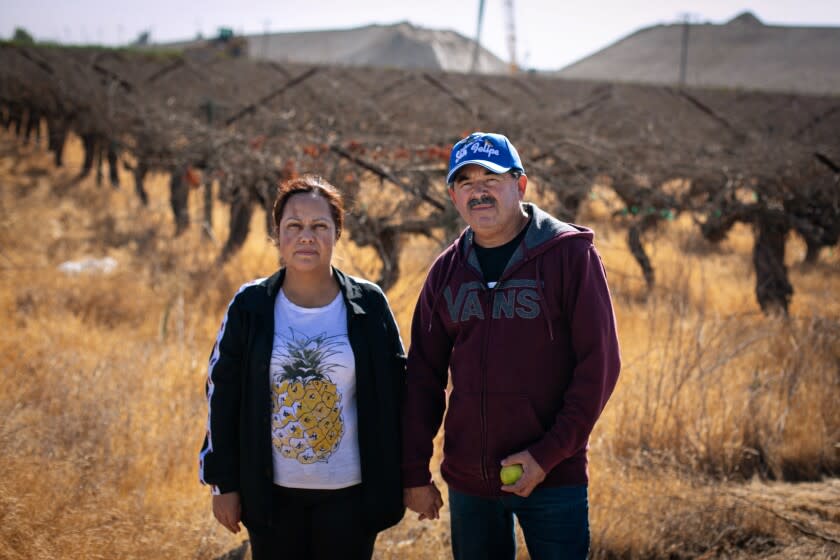
- Oops!Something went wrong.Please try again later.
Rodents and bugs infest the abandoned vineyards that surround Norberto and Yesenia Diaz's rural home, regularly invading their property.
Piles of construction debris tower near their yard, where their favorite neighbor once lived.
Bulldozers, dump trucks and equipment haulers rumble by their home daily, sending plumes of diesel smoke and dust into their front yard.
The family's once-tranquil slice of the San Joaquin Valley sits unbearably close to the nation's largest infrastructure project, surrounded on four sides by the California bullet train property and construction.
“I don’t understand why it is like this all day,” Yesenia Diaz shouted, as a pile driver pounded foundations into the tan earth a few hundred feet away. “It used to be so green. Now, all I see are weeds.”
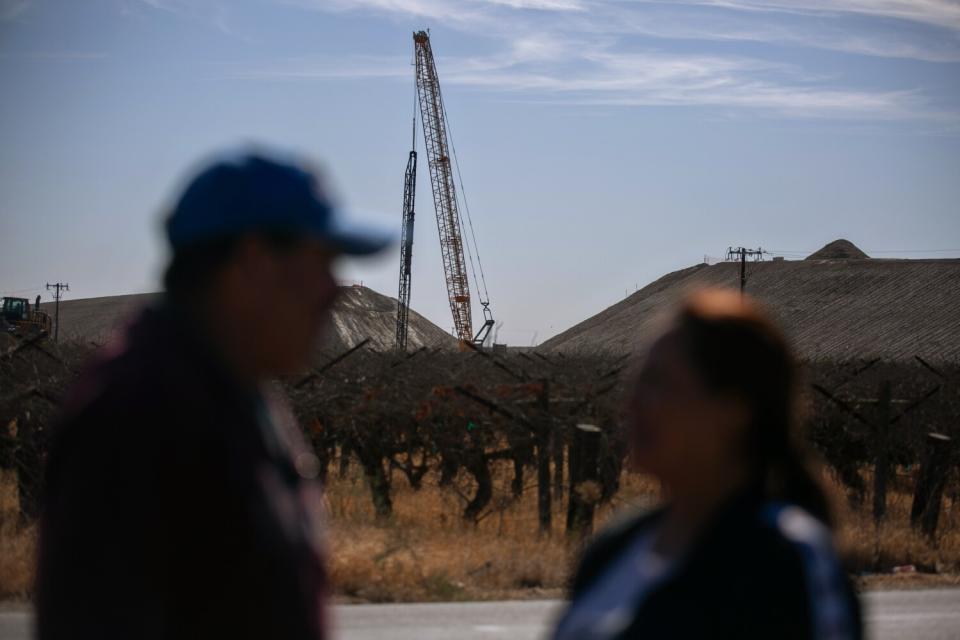
California history is replete with cases of highways, ports and water projects displacing poor people, who lacked the clout to fight the government. The California high-speed rail project pledged to do better. But up and down the San Joaquin Valley, the bullet train is hitting hard at people who are already struggling to survive tough economic conditions in one of the poorest regions in the nation.
The impacts include the Central Valley's largest homeless shelter, which was cut in half. A Cambodian couple lost their funky 1950s diner and are now unemployed. Drug deals and other crimes are flourishing at a former farm labor camp in Wasco that was shut by the bullet train.
Future construction will probably cause more problems. Another homeless mission in Bakersfield is due to be torn down, according to environmental documents. A working-class neighborhood with a large Latino population in San Jose is braced for greater noise and the loss of homes when new tracks are installed.
The rail authority says it has worked hard to help communities in the project's path and to compensate for the impacts it is causing. In 2012, before construction began, it issued an Environmental Justice Guidance that pledged: "To avoid, minimize, or mitigate disproportionately high human health and environmental effects, including social and economic effects, on minority and low-income populations.”
Anthony Williams, a rail authority board member, said that any project with the scope and size of the bullet train will have impacts on communities up and down the economic scale. In the long run, Williams, who is Black, believes the project will help elevate the economically depressed Central Valley.
"I come to this as a person of color who understands the long and not-great history of how communities of color have been impacted — if not with effect — with actual intent to harm and divide and isolate those communities," said Williams, who grew up in Bakersfield and considers himself a “Central Valley kid.” He went on to graduate from Harvard and is now an Amazon executive.
“That is not the case here,” he added.
The authority's views were not too different in 2015, when rail officials said they were trying to minimize impacts, though they had a railroad to build. In lengthy remarks at the time, Dan Richard, then-chairman of the rail authority, cited the larger benefits of the bullet train and lamented the effects, adding: “It just comes with the territory.”
The rail authority points to its work with disadvantaged communities on its route, such as Fairmead, near a massive future rail intersection. The rail authority has agreed to build a library and connect the city to a sewer system.
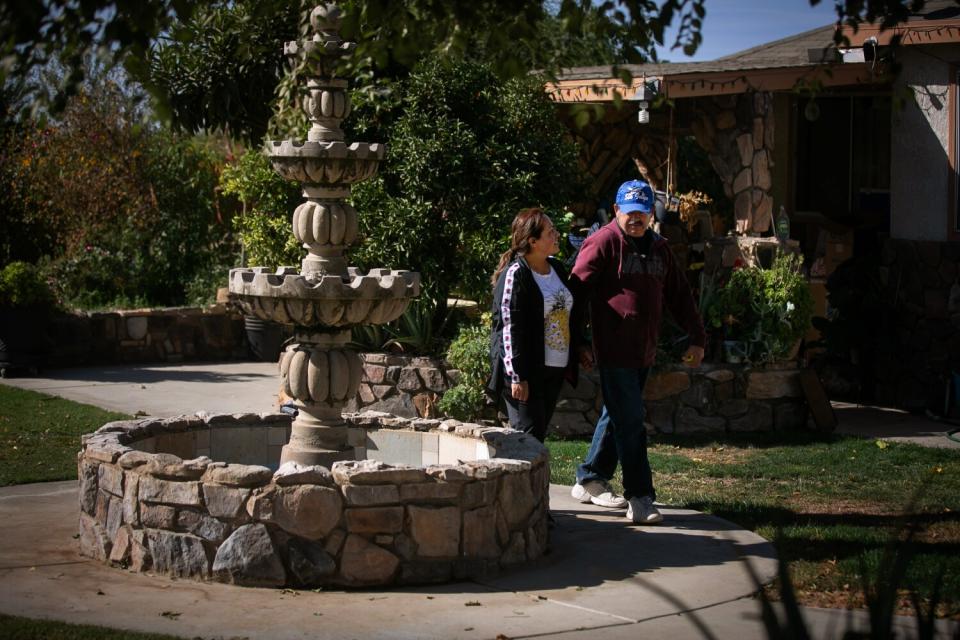
Such efforts haven't helped the Diaz family. The couple — a gardener and a housekeeper who immigrated from Mexico, became American citizens and now fly a U.S. flag above their property — bought their house in 2002, when it was badly run down. They say they fixed it up with their own hands. They took out mortgages to send their eldest daughter to Cal State Fresno and to pay for transportation costs to charter schools for their younger kids.
They were told not to worry about the project in 2010, when the rail authority sent a Spanish-speaking engineer to their home, Yesenia Diaz recalled. "He said everything will be OK. It will not affect us, only the neighbors. We trusted them."
When the rail authority bought the farms surrounding their home, about 50 miles south of Fresno, it let the crops die without grubbing the fields, the source of the pest problem, say the couple.
“We never saw so many bugs in the house in 20 years,” Yesenia Diaz said. “The ground looks like it is moving, there are so many bugs. All summer, we can barely go outside."
The rail authority also sank a high-capacity water well for dust suppression, which drained down a shallow aquifer that feeds their domestic well. Their walnut tree died and the fountain they built in front of the house is dry. When they complained earlier this year, the rail authority sent in bottled water, they said.
Asked about the problems, the rail authority said it recently created a buffer around their property, planned to clear the dead fields and is trying to figure out why their water pressure has dropped.

Their street, south of their house, is already blocked by a berm for a bullet train overpass and, when the tracks are laid, the street will be closed to the north, cutting them off on all sides. The only way out under state plans would be a path just for their house that winds around the towering highway overpass. They hope the Postal Service can find them. And when the system begins operating, bullet trains at 220 mph will fly by about 200 feet away and traffic on a nearby avenue will be rerouted onto an overpass, zooming 50 feet overhead.
"They are stuck," said Jan Kahn, a Hanford agriculture attorney who is advising the couple. Kahn said the bullet train's impacts make the house unmarketable. The state never made a purchase offer, though it bought the properties on every side of them, he said. Whether they would sell to the state depends on whether they could get a settlement to buy a similar house, Yesenia Diaz said, adding: "It is hard to find a place like this."
Matthew Jendian, chairman of Cal State Fresno's Department of Sociology, said the bullet train is mirroring some of the impacts that other transportation projects have inflicted on disadvantaged communities in the past, though not at the same scale.
"Clearly, there are gaps in the state's effort to mitigate these things and prevent harm to those most vulnerable families and individuals," he said. "You can't undo the damage that has been done in the past, but seeing this happen again, as a sociologist, is not surprising."
As it turns out, political connections and money can be a powerful tool in pushing back against the bullet train project.
In one of its biggest political compromises, the rail authority agreed to delete two sets of tracks and viaducts over 50 miles through the wealthy communities of Silicon Valley after residents mobilized a campaign, backed by local, state and federal politicians. The changes will translate into a slower bullet train, forcing it to share ground-level tracks with the Caltrain commuter rail system. It also saved a lot of money.
The state is building 119 miles of rail line in Madera, Fresno, Kings and Tulare counties, often taking out homes, businesses, orchards or anything else that might be in the way. About $8.7 billion has been spent on the $100-billion Los Angeles-to-San Francisco project so far. Delays have worsened some of the social impacts.
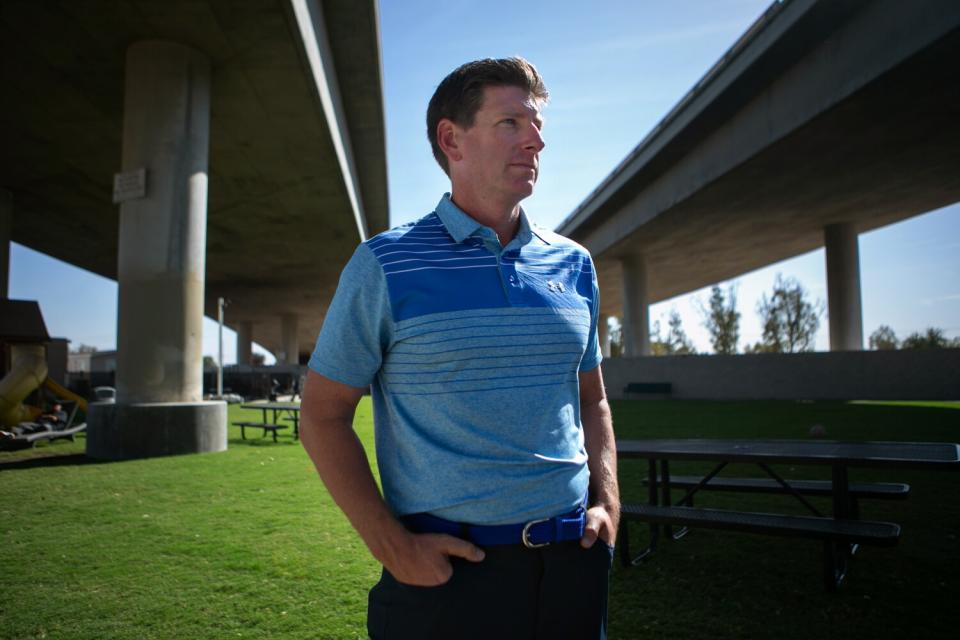
The largest homeless shelter in the Central Valley, the Fresno Rescue Mission, was in the way and lost half its land in 2013, said Chief Executive Matthew Dildine. The rail authority said it settled with the mission for $37 million in 2020 and paid an additional $16 million to cover relocation.
Dildine, however, said key parts of the operation had to shut down and future planning was put on hold.
“It paralyzed us for eight years,” Dildine said, a former attorney. “We could have done so much more. Now we are landlocked on a smaller parcel and part of the mission is under a freeway bridge.
"Do I think we were treated fairly along the way?" Dildine said. "I don’t. For them it is horse trading process.”
Eventually, Dildine hopes to move out of the neighborhood. As he surveyed the empty fields of the future rail alignment outside his mission, he said, “Up and down the rail corridor, you look at where the rail is going, and it is going through disadvantaged communities for sure.”
Just blocks away, Ken Chea and Kay Lim operated Angelos Deli, a 1950s-era burger joint, for nine years. It was a dream come true for the Cambodian immigrants, until the day in 2013 that a woman from the rail authority came in with a big stack of papers and announced the bullet train tracks would run through their business.
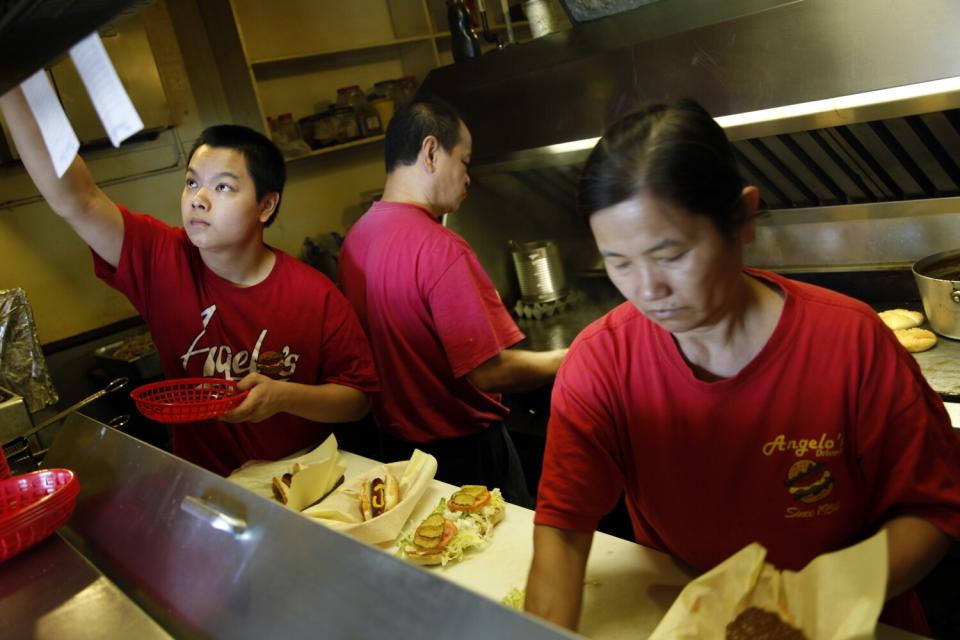
Unfamiliar with American legal protections and fearful of government from their experiences in Cambodia, they accepted $163,000 for their land and business. It was less than an average Fresno home sold for. The rail authority said it offered relocation assistance, but it was declined. Instead, the authority paid the family an additional $20,000. The couple never recovered and are now unemployed, said Peter Chea, their son.
"After that, they couldn't do anything," he said. "They don't think they were treated fairly."
The project will also hit parts of Bakersfield at the south end of the valley. Environmental reports acknowledge that from Bakersfield to Palmdale, the project "will result in adverse effects on all populations, including low-income or minority populations residing along the project corridor."
Among those affected are the Bakersfield Homeless Center and the historic Mercado Latino, a 100-shop market.
The rail authority said it significantly reduced impacts compared with its original plan, an assessment endorsed by Joseph Conroy, a Bakersfield city spokesman. The authority agreed to pay $6.1 million to help relocate the homeless center.
Assemblyman Vince Fong (R-Bakersfield), however, termed as "absolutely ludicrous" some of the mitigations touted by the rail authority.

"The high-speed rail authority is trying to sugar coat the impacts it is having on communities," Fong said. "It impacts significantly part of Bakersfield that is socioeconomically disadvantaged."
It is hard to find a neighborhood more impacted by public infrastructure than the Gardner section of San Jose, wedged into a triangle defined by the 280 and 87 freeways and railroad tracks put down during the 1930s. It is also under the flight path to San Jose International Airport.
When high-speed rail consultants first began public meetings on the route through the Latino and white working-class neighborhood, they were in English, said Mayra Flores, an activist with the Greater Gardner Action Committee.
"The community was predominantly Spanish speaking," she said. "It got better when they took a multilanguage approach."
The community asked the rail authority to follow a route paralleling the 280 Freeway, bypassing the neighborhood. At one point, it was an alternative under study. But it now appears that when a final environmental impact statement is issued, the route will be on an existing right of way used by the Caltrain commuter system and Union Pacific.
The existing two tracks through the neighborhood will have to be expanded to three tracks to handle the addition of bullet trains.
The rail authority said that the alternative route would have cost billions of dollars and that it plans to take only three homes and a small portion of the work. But its early estimates of land takes were grossly underestimated in the Central Valley. Residents are braced for more noise.
"The train going through here will have a big impact," said Patricia Palomares-Mason, another Gardner activist. "Even with the trains we have, the houses are 12 feet away. They put their program first, and when we want to ask questions, we are limited. Where is the fairness?"
James Weirick, who owns a 10-acre industrial site in downtown Fresno, said he found himself in a bullet train twilight zone in June 2019, when the rail authority began storing sewer pipes on his land without his authorization. Not long after the pipes were dumped, vagrants quickly occupied them and built an encampment, said Wierick, a former Marine Corps prosecutor who gave up law to work as a California firefighter and manage his property.
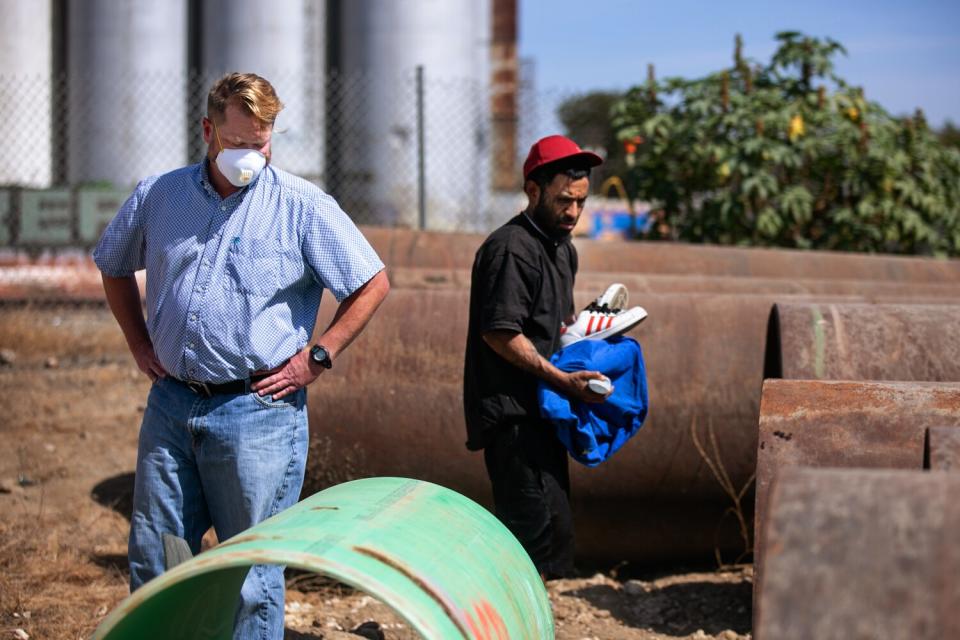
On a recent day, a bedraggled man exited one of the pipes about noon and walked away on the bullet train alignment.
Part of Weirick's land is occupied by a nonprofit thrift company, Neighborhood Industries, which provides jobs to former welfare recipients under a state program. When homeless people moved into the pipes, they began breaking into the thrift warehouse and repeatedly stealing from it, said Chief Executive Anthony Armour.
"We have to clean up the mess left by them every single day," said Armour, a first-generation Japanese American, whose social media motto is "Advocating for the marginalized, one transaction at a time." "I had to hire full-time security and install cameras."
Weirick complained to the rail authority that its sewer pipes are being stored illegally. It referred him to its contractor, Tutor Perini. When he called the company, officials told him it was the rail authority's issue, he said. Emails went unanswered for months, he added.
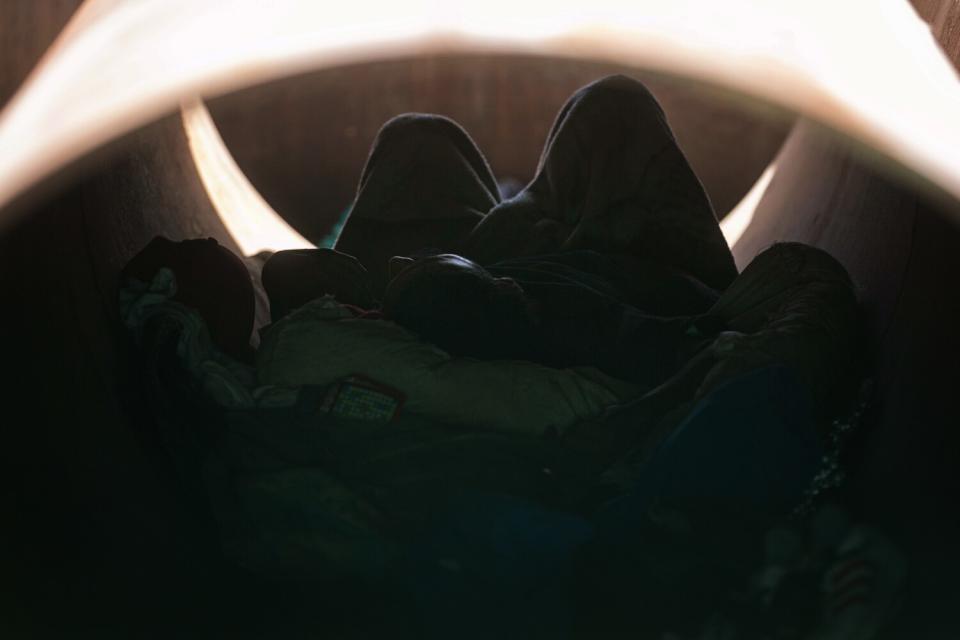
The authority said it and Tutor Perini "are actively working with the property owner to extend a temporary construction easement." Weirick contends the easement never included storage of materials.
On June 26, an intense fire consumed the 48,000-square-foot thrift store warehouse, along with half a dozen trucks, several fork lifts and half a million pounds of clothing. An investigation could not determine who set the fire but found footage of two men who came to the loading dock around the time the fire began. Armour says he believes the homeless people living in the rail authority's sewer pipes started the fire, but he acknowledges he can't prove it.
The thrift store lost half a million dollars in sales because of the fire. The nonprofit had nearly its entire fleet of vehicles and 17 people working at the warehouse, who the group is trying to keep employed. "The people who got hurt worst are the people who live in the cracks and crevices," Armour said.
Wasco, a disadvantaged farming city about 100 miles south of Fresno, has its own fight with high-speed rail. The bullet train route will cut through downtown, right next to a 24-acre site that housed farmworkers since the 1940s. It was vacated in 2017, when the rail authority helped the city with $10 million to build new housing farther from its future tracks. It was the city's responsibility to demolish the camp.
The city thought it was getting a good deal, until it realized the housing complex was full of asbestos, said Wasco's current city manager, Scott Hurlbert. The estimated cost to demolish the old site is $10 million, the same amount the rail authority paid the city to relocate the camp.
The city can't afford to demolish the camp and wants the rail authority to pay. The rail authority said it is trying to help, including finding a government grant to fix the problem. Chief Executive Brian Kelly visited the city to discuss the problems earlier this year. The authority said the camp was going be vacated regardless of of the rail line.
Hurlbert said the blighted site has attracted criminals. "Many of the units have been set on fire," he said. "There are homeless folks there, others hiding out, doing drug deals and storing stolen goods, you name it."
The situation boiled over at a March 25 rail board meeting, when city and school leaders lambasted the authority, asserting the blighted site has caused a crime wave. School officials say drug dealers operating out of the camp have lured in vulnerable youth.
"You use words such as environmental justice and social equity when it suited you," said Orquidea Ocampo, a member of the city's sales tax commission who grew up in the camp. "Now that your decisions have unforeseen consequences, you failed and say it is not your fault or responsibility. Where is your humanity?"
Updates:
4:59 p.m. Oct. 31, 2021: This article was updated to provide more information about several of the project impacted by the rail program including mitigation efforts in Fresno and Wasco. It also clarified details of high speed rail planning efforts on the San Francisco Peninsula.
5:00 p.m. Oct. 31, 2021:
For the record:
5:00 p.m. Oct. 31, 2021:
This story originally appeared in Los Angeles Times.

